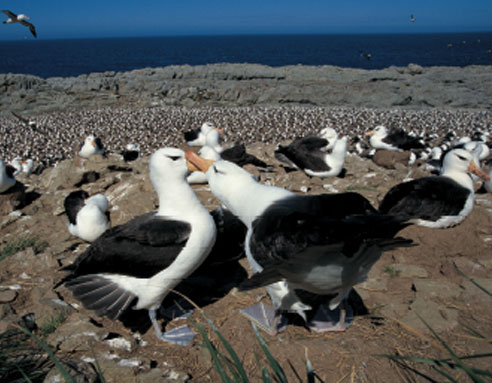
This Article From Issue
September-October 2005
Volume 93, Number 5
Page 475
DOI: 10.1511/2005.55.475
In Wildlife Spectacles (Conservation International/CEMEX, $50), renowned photographers and eminent scientists (including Patricio Robles Gil, Cristina G. Mittermeier, Thomas Brooks, Michael Hoffman, William R. Konstant, Gustavo A. B. da Fonseca and Roderic B. Mast) have teamed up under the leadership of Russell A. Mittermeier, the president of Conservation International, to highlight nature's awesome profligacy. The pictures and accompanying text feature dramatic congregations of animals, their sheer numbers taking over the landscape and becoming its dominant feature as they seek food and refuge, put on courting displays or migrate.

From Wildlife Spectacles
Anyone leafing through this hefty volume will be impressed by the superb photographs, but its true value is as a reminder of nature's abundance in the absence of destructive human activity. The book will inform teachers and students, thrill wildlife enthusiasts and inspire conservation efforts. The authors point out that species are vulnerable when many members amass and that it would therefore be helpful for migration corridors and feeding and breeding sites to be made protected areas.
The color plates, often spread across two pages, swarm with every variety of creature—mammals, birds, reptiles, amphibians, fish and invertebrates. We see herds of wildebeest trekking across a dusty African plain in search of new pastures, a shimmering pink mass of flamingos, vast seabird colonies packed onto a remote island cliff, monarch butterflies festooning trees at their overwintering grounds in Mexico, a herd of several hundred belugas, a multitude of caribou stretching to the horizon, a huge mass of marine iguanas climbing over one another, and a swarm of sea nettles (a type of jellyfish). Shown above are hundreds of black-browed albatross on Steeple Jason Island in the Falklands; the island is home to a colony of 166,000 breeding pairs.
The sumptuous images are indeed spectacular but are of course no substitute for seeing and experiencing the actual teeming wildlife. The mute photographs serve as a poignant reminder of what the world stands to lose.

American Scientist Comments and Discussion
To discuss our articles or comment on them, please share them and tag American Scientist on social media platforms. Here are links to our profiles on Twitter, Facebook, and LinkedIn.
If we re-share your post, we will moderate comments/discussion following our comments policy.